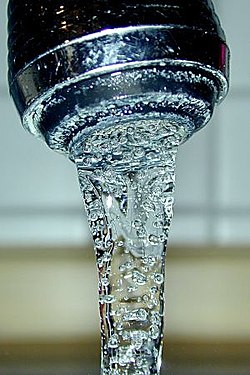This article needs additional citations for verification .(August 2011) |

The water industry provides drinking water [1] and wastewater services (including sewage treatment) to residential, commercial, and industrial sectors of the economy. Typically public utilities operate water supply networks. The water industry does not include manufacturers and suppliers of bottled water, which is part of the beverage production and belongs to the food sector.
Contents
- Organizational structure
- Ownership of water infrastructure and operations
- Operations
- Functions
- Standards
- Global companies
- See also
- References
- External links
The water industry includes water engineering, operations, water and wastewater plant construction, equipment supply and specialist water treatment chemicals, among others.
The water industry is at the service of other industries, e.g. of the food sector which produces beverages such as bottled water. [2]